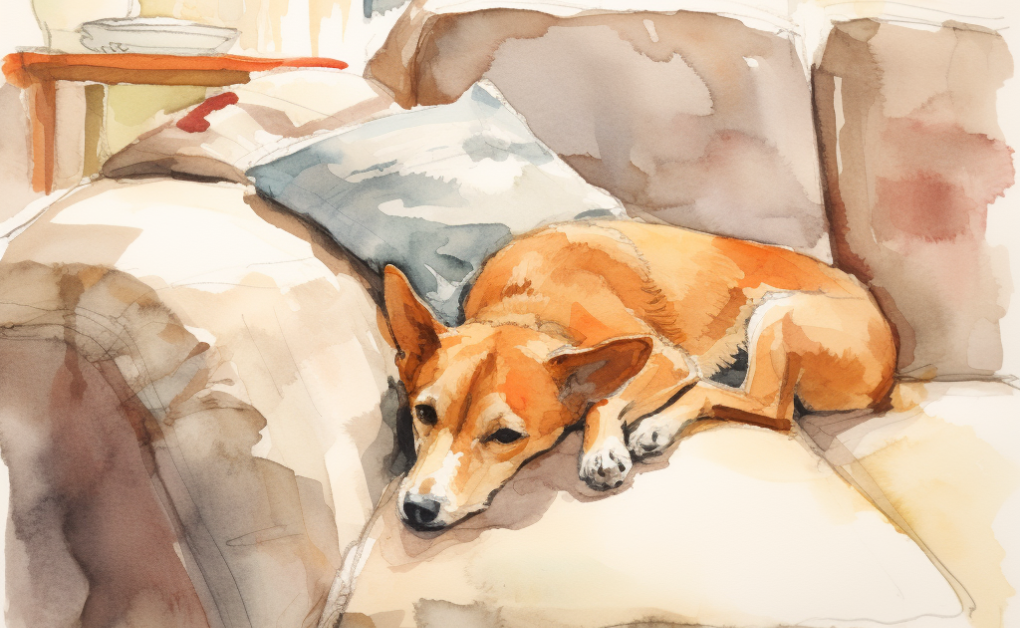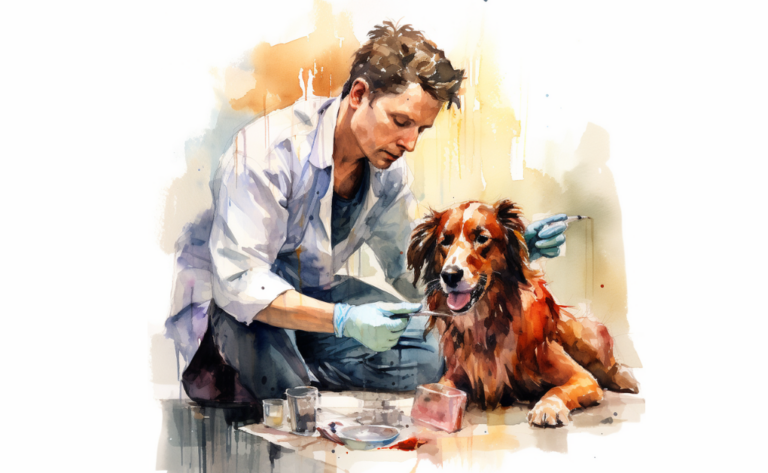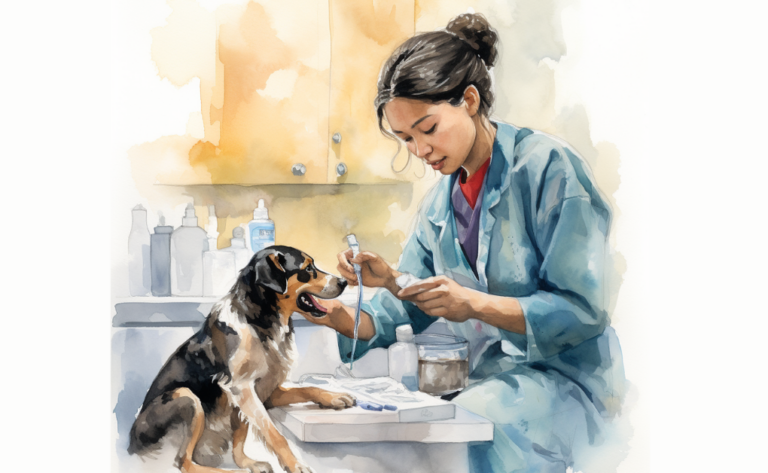What is Anal Gland Disease in Dogs?
What is it?
How is it Treated?
Breed Predispositions
Chihuahuas Toy Poodles Yorkshire Terriers Shih Tzus Lhasa Apsos
Introduction
Kevin had always been proud of the bond he shared with his energetic Cocker Spaniel, Daisy. However, recently, he noticed that Daisy seemed to be constantly scooting and licking her rear end, clearly bothered by some discomfort. Puzzled and concerned about her unusual behavior, Kevin took Daisy to the veterinarian for a thorough examination. The vet informed Kevin that Daisy was suffering from an anal gland disease, which was causing her considerable distress.
Anal gland disease in dogs, often called anal gland problems, includes a range of conditions that impact the anal sacs. These are tiny pouches located on either side of a dog’s anus. The anal sacs produce a thick, strong-smelling secretion typically released when a dog passes a bowel movement. This secretion from the anal sacs also serves as a means of communication and territorial marking among dogs. However, complications associated with anal glands in dogs can lead to discomfort, pain, and infection.
The anal sacs may become impacted or blocked, resulting in distress or significant pain for the dogs. This is common for dogs and is one of the main reasons dogs tend to have issues with their anal glands. Moreover, infections can occur around the glands, leading to the formation of an anal sac abscess that requires veterinary intervention. Such conditions in dogs with anal gland problems must be diagnosed and treated promptly to prevent further health complications.
In some instances, the sacs will become swollen, indicating a problem with the glands, leading to discomfort. Therefore, maintaining healthy anal sacs in dogs is essential for their well-being and comfort.
What is Anal Gland in Dogs?
Anal glands, also known as anal sacs, are small, pea-sized glands on either side of a dog’s anus at approximately 4 and 8 o’clock positions. Each gland is connected to the anus by a small duct, and the glands produce a potent, smelly fluid.
This fluid is a secretion that dogs use for scent marking. When a dog defecates, some of the fluid is squeezed out onto the feces, leaving a unique scent that other dogs can identify. This is why dogs are often interested in sniffing feces and the area around each other’s rear ends. It’s a form of communication in the canine world.
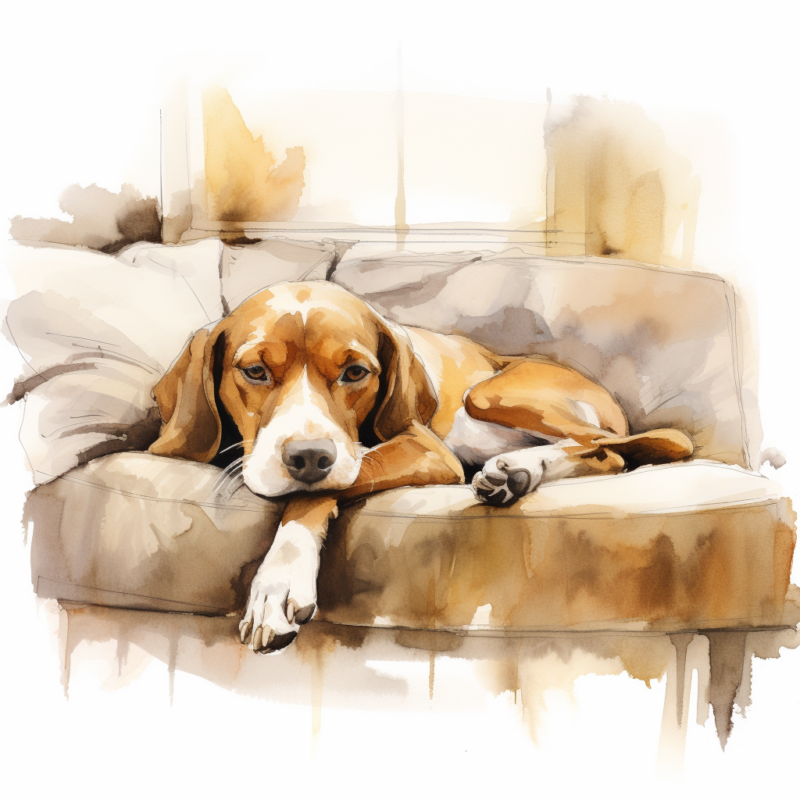
Common Anal Gland Problems
Anal gland issues are a common problem in dogs. Here are some of the most common anal gland problems:
- Anal Gland Impaction: This is the most common issue. The anal glands produce a fluid that is typically expressed during defecation. If this fluid becomes too thick or the duct leading from the gland to the outside gets blocked, the gland can become impacted, causing discomfort.
- Anal Gland Infection: If impaction is not addressed, bacteria can build up in the gland, leading to an infection. This can be painful for the dog and may require antibiotic treatment.
- Anal Gland Abscess: An infected gland can sometimes form an abscess. This more severe condition often requires more intense treatment, including lancing the abscess to drain it and administering antibiotics.
- Anal Gland Tumors (Adenocarcinoma): Although rare, anal gland tumors can occur. These tumors can be benign (non-cancerous) or malignant (cancerous). They can cause symptoms similar to other anal gland problems, such as difficulty defecating or bloody discharge, and may require surgical removal and other treatments.
- Anal Gland Rupture: If an abscess isn’t treated promptly, it can rupture. This can cause a painful open wound near the dog’s anus that may need immediate veterinary care.
Anal gland issues can cause a dog to scoot its bottom along the ground, lick or bite at the area around its anus, or show other signs of discomfort. If you notice any of these behaviors, it’s essential to consult a veterinarian promptly.
Causes of Anal Gland Disease in Dogs
Various factors can lead to anal gland disease in dogs, commonly known as anal sac disorder, including:
- Insufficient anal gland expression: Some dogs may not effectively express their anal glands naturally. This can result in the buildup of secretions, leading to a heightened risk of anal gland impaction or infection.
- Obesity: Overweight or obese dogs may encounter difficulties emptying their anal glands due to excess fat around the anus, which can hinder the normal process of gland expression.
- Soft or loose stools: If a dog has soft or loose bowel movements, it may not adequately express its anal glands during defecation. This is because firm stools assist in applying pressure on the glands, facilitating their emptying.
- Anatomical irregularities: Some dogs may have narrow or malformed anal gland ducts, making it challenging for the glands to empty correctly, thereby increasing the risk of impaction or infection, also known as anal sacculitis.
- Inflammation: Inflammation in the vicinity of the anal glands, perhaps from allergies, skin infections, or parasites, can lead to the onset of anal gland disease.
- Recurring infections: Dogs that have previously had anal gland infections may be more predisposed to developing problems with their anal glands.
- Age and breed: Certain dog breeds, especially small or toy breeds, may be more vulnerable to anal gland disease. Additionally, older dogs may face higher risks due to age-associated alterations in their digestive system or anal gland function.
Recognizing the causes of anal gland problems is critical to managing this condition. Hence, if you believe your dog might have an anal sac disorder, it’s crucial to promptly consult with a veterinarian, as early treatment can help mitigate further complications.
Symptoms of Anal Gland Disease in Dogs
The symptoms of anal gland disease in dogs, including impacted anal glands, can differ based on the root problem, such as impaction, infection, abscess, or tumor. Yet, there are universal signs that could suggest your dog has issues with its anal glands:
- Scooting
- Overzealous licking or biting at the anal region
- Unpleasant odor from the anal area
- Noticeable discharge or blood from the anal area could indicate a perianal fistula.
- Trouble defecation or bowel movement alterations
- Pain or uneasiness while sitting or during bowel movements
- Decreased appetite
- Irritability or behavioral changes
- Lethargy or diminished activity levels
Suppose you spot any of these symptoms in your dog, particularly signs of anal discomfort like dog scooting. In that case, contacting your veterinarian for an accurate diagnosis and suitable treatment is critical.
Diagnosis of Anal Gland Issues in Dogs
Determining the presence of anal gland disease in dogs, including impacted anal glands, encompasses a variety of steps a thorough physical evaluation, an understanding of the dog’s health history, and possibly additional diagnostic tests.
Health Background and Physical Check-up
The veterinarian will meticulously conduct a full-body physical inspection, giving extra attention to the anal region. They will look for discomfort, inflammation, redness, or discharge signs. Next, veterinarians can palpate the anal sacs to verify whether they are impacted or enlarged. A comprehensive health history of the dog will also be gathered, looking for recurring issues or past episodes of anal gland problems.
Anal Gland Expression
An essential tool for diagnosing anal sac disease in dogs is anal gland expression. The vet will manually stimulate the anal sacs to observe the anal gland material that is expelled. This procedure can aid in figuring out whether the glands are impacted, infected, or have an abscess.
Microscopic Examination
Microscopic or cytology analysis of the fluid can expose the presence of bacteria or inflammatory cells, suggesting an anal gland infection.
Ultrasound Scanning
In extreme or chronic cases, an ultrasound scan may be utilized to examine the anal sacs more meticulously. This can assist in identifying abscesses or tumors that could be the root cause of the problem, especially in cases of recurrent anal sac disease.
Biopsy
Should there be suspicion of a mass or tumor, a biopsy may be required. This involves microscopic examination of a small tissue sample from the anal sacs.
Each diagnostic tool offers essential information, assisting the vet in diagnosing and formulating a treatment plan for both male and female dogs. The exact combination of tests will be determined based on the dog’s symptoms and medical background, remembering that anal glands are scent glands that occasionally cause issues.
Treatment for Anal Gland Disease in Dogs
Handling anal sac issues in dogs requires a tailored approach based on the seriousness and type of ailment. Some specific interventions include:
- Anal Sac Expression: For anal glands that are impacted, meaning they’re not wholly or naturally emptying, the usual recourse is to squeeze the anal glands to extricate the accumulated secretion manually. This procedure is often performed by a veterinarian or a skilled technician at the veterinary clinic.
- Antibiotics: When an infection is detected, antibiotics may be deployed by your vet to address it. These antibiotics could be oral or topical, hinging on the nature and severity of the infection.
- Medicated Baths or Topical Remedies: Utilizing a medicated bath or applying topical creams or ointments might help alleviate inflammation in the area and expedite healing.
- Surgery: In instances where the disease is chronic, severe, or caused by anal sac tumors, surgical removal or anal sacculectomy might be necessary. Here, veterinary surgeons remove the problematic anal sacs. However, this method is typically considered a last line of action due to possible complications, including fecal incontinence.
- Dietary Alterations: Given that soft stools can aggravate anal gland issues, your vet might suggest changes to your dog’s diet to solidify their stools. A diet high in fiber can aid in the natural emptying of the anal glands during defecation.
- Pain Alleviation: If your dog shows discomfort, your vet may suggest some form of pain relief to help them manage their condition. This could come in the form of medication or specific soothing topical treatments.
Remember, every anal sac problem in dogs is distinct and necessitates a treatment plan customized by your vet. Regular check-ups with your vet will ensure the appropriate management of your dog’s condition and allow timely adjustments to their treatment if needed. Always adhere to your vet’s guidelines for optimal results when dealing with anal gland abscesses or if the anal glands can become an issue requiring removing the anal sacs.
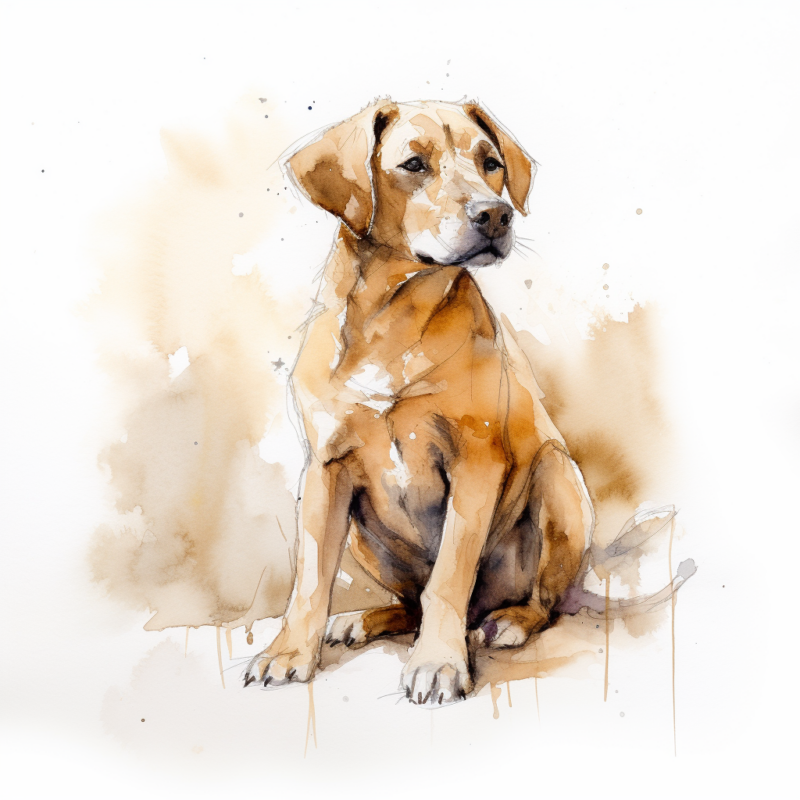
How to Prevent Anal Gland Problems in Dogs
To mitigate the risk of anal gland problems in dogs and cats, proactive steps involving balanced dietary practices, routine exercise, and diligent care are required. Here’s a guide to preventive measures for anal gland issues, which are common in dogs, especially certain breeds of dogs:
To mitigate the risk of anal gland problems in dogs and cats, proactive steps involving balanced dietary practices, routine exercise, and diligent care are required. Here’s a guide to preventive measures for anal gland issues, which are common in dogs, especially certain breeds of dogs:
- Providing your pet with a nutritious, fiber-rich diet is crucial. Adequate fiber aids in regular bowel movements, naturally assisting the external anal glands during defecation, preventing anal gland issues.
- Regular physical activity helps maintain a healthy weight, promoting proper digestion. Encouraging daily walks, play sessions, and other forms of exercise can help ensure your dog’s digestive system and associated anal glands function optimally.
- Maintaining your pet’s hygiene through regular grooming sessions, which include bathing and brushing, can help uphold overall cleanliness and provide an opportunity to spot early signs of problems associated with the anal area, such as skin irritations, swelling, or discharge.
- Scheduling regular visits to the veterinarian for comprehensive health assessments, vaccinations, and dental care is vital. During these sessions, the vet can inspect your dog’s anal glands for any signs of discomfort or blocked anal glands and express them manually if necessary.
- Pay close attention to your dog’s behavior for signs of discomfort or suffering from anal gland issues, such as scooting, excessive licking, or swelling near the anal area. If you notice any unusual behaviors, consult your veterinarian for a thorough examination.
- Under certain circumstances, your veterinarian might suggest you learn to express your dog’s anal glands at home. This should only be done under veterinary guidance, who can instruct you on the correct technique, preventing potential harm or discomfort to your pet.
Following these preventive measures and maintaining open communication with your vet can reduce the risk of anal gland problems in dogs and ensure that your furry companion stays healthy and comfortable.
Frequently Asked Questions
Disclaimer: The information provided on this veterinary website is intended for general educational purposes only and should not be considered as a substitute for professional veterinary advice, diagnosis, or treatment. Always consult a licensed veterinarian for any concerns or questions regarding the health and well-being of your pet. This website does not claim to cover every possible situation or provide exhaustive knowledge on the subjects presented. The owners and contributors of this website are not responsible for any harm or loss that may result from the use or misuse of the information provided herein.

